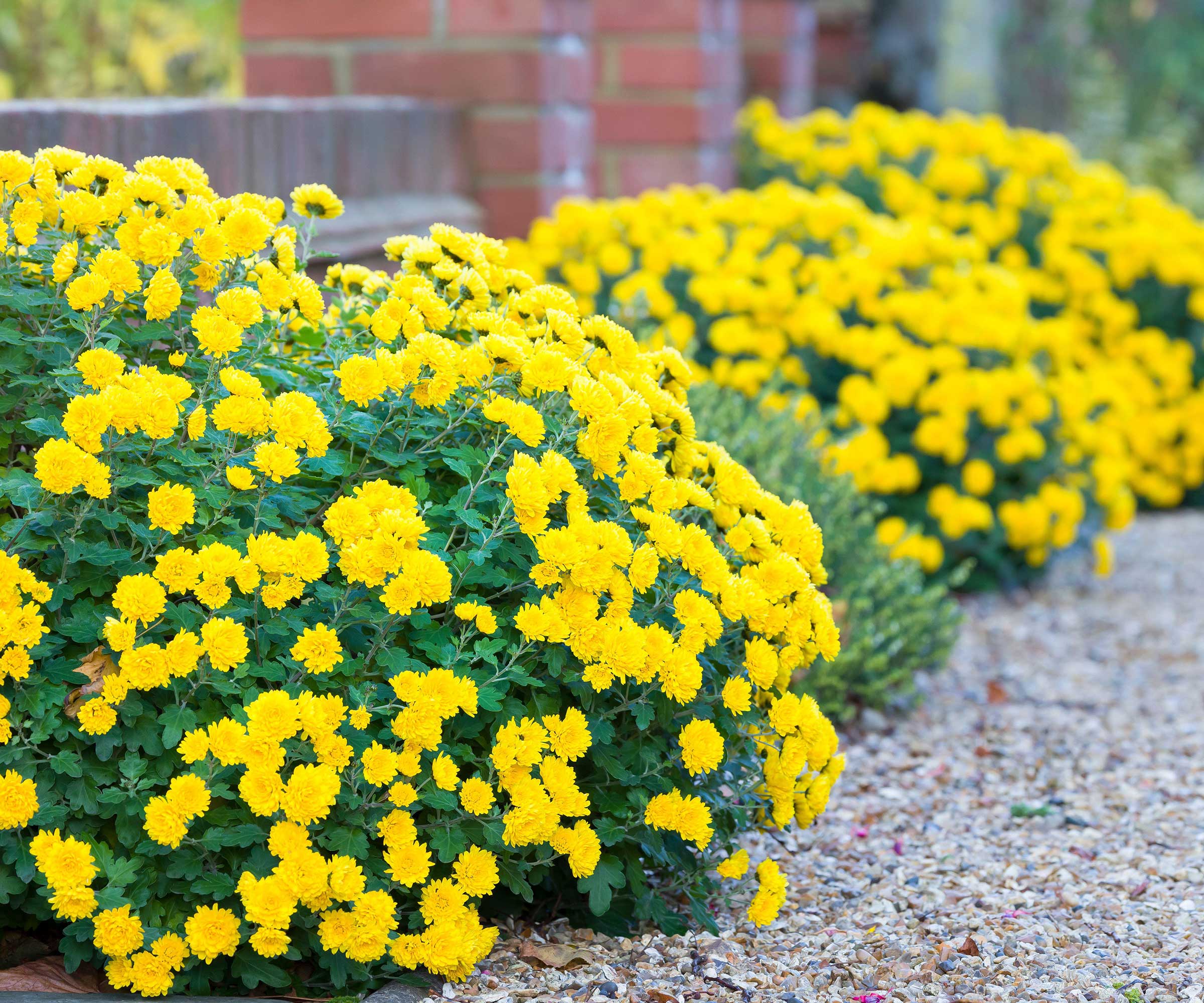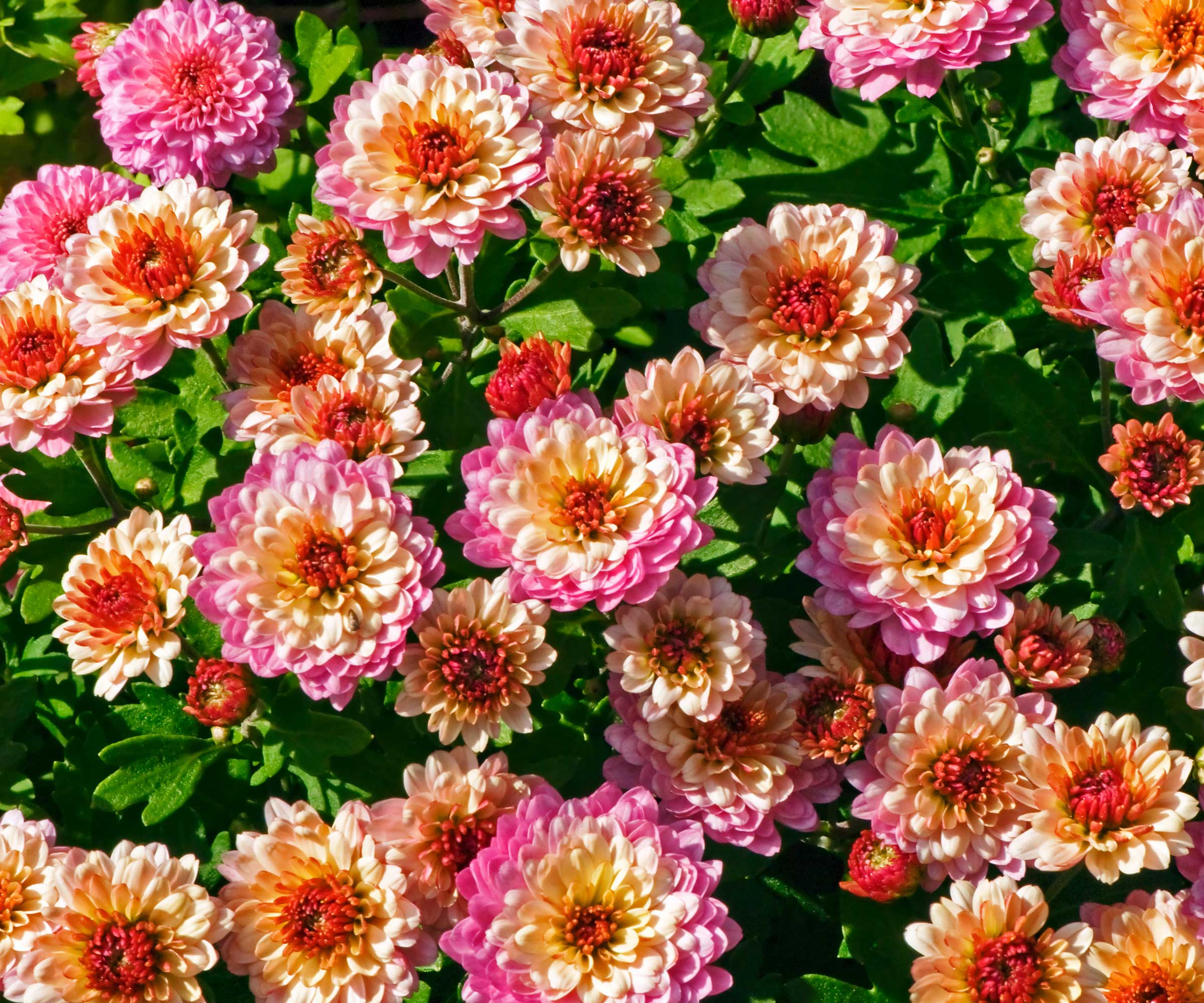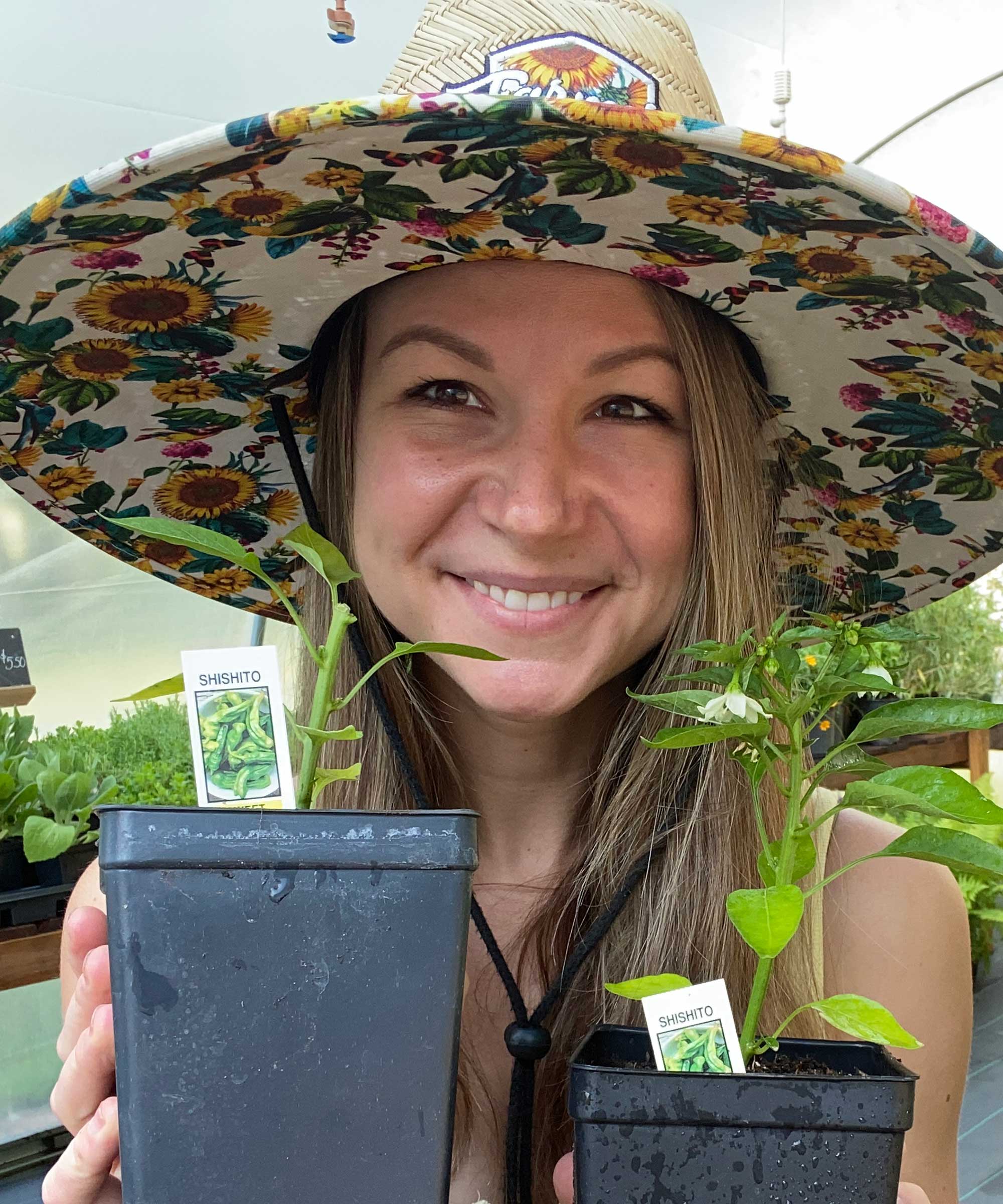How to propagate chrysanthemums – to grow more of these fall favorites for free
Long-flowering and brightly-colored mums can be propagated easily from cuttings or by division


Q: I have grown chrysanthemums in my backyard this fall, both in my garden borders and in patio containers. As they've flowered so beautifully, I'd like to grow even more next year. Are they easy to propagate?
A: Chrysanthemums are one of the best fall flowers for pots and flower beds and you'll be pleased to know that they are easily propagated. Like most perennials, they can be divided, but you can also take cuttings from the plants if you prefer. Both methods should be carried out in the spring, once new growth has started.

Chrysanthemums can be used to line a pathway
Two ways to propagate chrysanthemums
Try these tips at home for more fabulous plants.

Chrysanthemums make excellent cut flowers
Propagating chrysanthemums by division
If chrysanthemums have grown into a clump, you can divide them to make new plants, says gardening expert John Negus.
'Wait until new growth appears in spring and then lift the entire plant out of the ground,' he instructs. Then, he suggests using a sharp blade or a spade to split the plant into portions. Each section can then be replanted around your yard.
The gonicc Professional Hori Hori Garden Knife from Amazon is a popular tool and well-suited for this task.
Another benefit of dividing plants is it prevents them from becoming overly congested and can help restore their vigor. Because of this, it's a good approach for older and more established plants.
Design expertise in your inbox – from inspiring decorating ideas and beautiful celebrity homes to practical gardening advice and shopping round-ups.

John has been a garden journalist for over 50 years and regularly answers readers' questions in Amateur Gardening magazine. He has also written four books and has delivered many talks over the years on horticulture.

Established plants can be split into sections and replanted
Propagating chrysanthemums by taking cuttings
Many plants can be propagated from cuttings, so it's a useful skill to learn. When using this method for chrysanthemums, take the cuttings from the growing shoots, otherwise known as taking softwood cuttings.
The process is simple:
- Select healthy, non-flowering shoots, and make clean cuts at a 45-degree angle, just below a leaf node, instructs Autumn Hilliard-Knapp of Perfect Plants Nursery. 'Remove the lower leaves, leaving a few sets of leaves at the top of the cutting.'
- An optional step, noted by both Autumn and Anna Ohler, the owner of Bright Lane Gardens nursery, is to dip the cut end of your cuttings into a rooting hormone. This can help stimulate root growth and increase success rates, Autumn says.
- 'Plant the prepared cuttings in well-draining soil,' Autumn continues.
- 'Ensure the soil remains consistently moist but not waterlogged,' she says. 'Place the cuttings in an area where they can receive indirect sunlight. It can also be helpful to place a plastic bag over the cuttings to increase humidity.' If you choose to use a plastic bag, make sure it is not touching the plant, because that could increase mold growth, she warns.
- 'Roots can take anywhere from 4-6 weeks to develop,' says Anna. You can typically feel the roots if you tug gently on the top of the cutting and it stays firmly in the soil, she adds.
- Once the roots have developed, the cuttings can be transplanted into individual pots or directly into the garden, says Autumn. Use well-draining soil and continue to provide appropriate care, including regular watering and sunlight exposure, she adds.

Autumn is a horticulture specialist and marketing professional at Perfect Plants Nursery. With four years of experience in the horticulture industry, she has developed a passion for helping people create beautiful indoor and outdoor spaces to enjoy. Her expertise in horticulture encompasses a broad range of activities, including plant care and selection, landscape design, and maintenance.

Anna is an avid plant hobbyist and the Owner and Operator of Bright Lane Gardens, a boutique plant nursery in Northern Michigan. With over a decade of experience in gardening and landscaping, she takes every opportunity to share her knowledge on all things plant related.

These fall flowers are perfect for pots
FAQs
Can you propagate chrysanthemums from seed?
Seed packets are available to buy for some varieties of chrysanthemums. 'Chrysanthemum seeds can be sown directly in the garden in early spring, or indoors 6-8 weeks before the last frost date,' says Autumn Hilliard-Knapp of Perfect Plants Nursery.
'Sow the seeds on the soil surface, lightly press them in, and cover them with a thin layer of soil. Keep the soil consistently moist but not waterlogged. Once the seedlings have a few sets of true leaves, thin them out to allow proper spacing.'
If you want more seasonal flowers for a beautiful fall garden, consider propagating other plants, too. Learning how to propagate Japanese anemones or pansies is a great way to add to the display, without extra cost.

Holly started writing about gardening five years ago, and she is a regular contributor to Homes & Gardens. She has also written many gardening features for Woman & Home and Real Homes, too. She has previous experience as a professional gardener, where she helped to plant and maintain private gardens. Holly has also looked after allotment plots over the years and loves to grow her own flowers and veggies from seed. In her spare time, she enjoys visiting local gardens, botanical drawing, and tending to her ever-growing collection of houseplants.